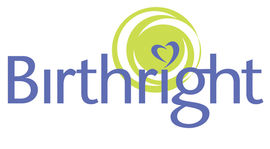Central Auckland, East Auckland, North Auckland, South Auckland, West Auckland > Private Hospitals & Specialists >
Birthright - Obstetrics
Private Service, Obstetrics (Maternity), Gynaecology
Today
8:00 AM to 5:00 PM.
Description
If you are pregnant, congratulations!
Birthright is an Ascot Remuera based group obstetric practice formed by some of Auckland's leading obstetricians. We are committed to making pregnancy and childbirth as enjoyable and stress-free as possible.
One of us is always on call 24/7 and readily available. We do not do on call for days at a time and are comparatively well-rested. We believe that this ensures the best possible care for you during this very important time in your life. You will of course have ample opportunity to meet all of us during the pregnancy. Our aim is that when you arrive in labour, not only will we have a good rapport, but that a trusting partnership will be in place.
Our other main point of difference is that we work in unison with our own midwives so that continuity of care and communication is optimised.
Our mums-to-be book their pregnancy care with us as there is a fairly high chance of needing an obstetrician in labour or birthing.
We are a close knit group of obstetricians with areas of special interest which include:
• normal, high risk and multiple pregnancy
• normal births
• instrumental delivery
• elective Caesarean section
• emergency Caesarean section
• the management of miscarriage.
At the initial visit at around 10 weeks, you will be asked various health related questions and have a general examination. A plan for ongoing care for the pregnancy will be worked out in close conjunction with you. Screening for foetal abnormality will be discussed and a nuchal translucency scan or further tests can be arranged after your needs have been discussed. Partners or family members are encouraged to attend visits. Although vaginal birth is thought to be the safest way for women to give birth, we believe in maternal choice and are happy to discuss your wishes in detail.
You will also be offered a scan at around 18-20 weeks and will usually visit the antenatal clinic monthly until 28 weeks gestation. From then until 36 weeks the visits will usually be fortnightly and weekly for the last 4 weeks.
We will remain your lead maternity carer until around 6 weeks after the birth of your baby at which time we will see you for a postnatal check. Our midwives will visit you to provide postnatal care during this time.
Consultants
-

Dr Khaldoun Aweidah
Obstetrician
-
Dr Elizabeth Curr
Obstetrician
-
Dr Mahesh Harilall
Obstetrician
-

Dr Rachel Murray
Obstetrician
-
Dr Cindy Ooi
Obstetrician
-

Dr Olivia Stuart
Obstetrician
-

Dr Helen Winrow
Obstetrician
Referral Expectations
You can see us at any stage of your pregnancy for full lead maternity care. Women that choose to book their pregnancy care with us are advised to contact us around 5-7 weeks of pregnancy so that we can discuss all options for care early.
Fees and Charges Description
Full pregnancy care (NZ residents): $7,400
This includes all appointments with our obstetricians and post natal midwifery care.
The same charge applies regardless of the mode of delivery, this includes caesarean section.
Non residents will be advised at booking of the fee.
Hours
8:00 AM to 5:00 PM.
| Mon – Fri | 8:00 AM – 5:00 PM |
|---|
Common Conditions / Procedures / Treatments
Ultrasound imaging, also called ultrasound scanning, is a method of obtaining pictures from inside the human body through the use of high frequency sound waves. Obstetric ultrasound refers to the specialised use of this technique to produce a picture of your unborn baby while it is inside your uterus (womb). The sound waves are emitted from a hand-held nozzle, which is placed on your stomach, and reflection of these sound waves is displayed as a picture of the moving foetus (unborn baby) on a monitor screen. No x-rays are involved in ultrasound imaging. Measurements of the image of the foetus help in the assessment of its size and growth as well as confirming the due date of delivery.
Ultrasound imaging, also called ultrasound scanning, is a method of obtaining pictures from inside the human body through the use of high frequency sound waves. Obstetric ultrasound refers to the specialised use of this technique to produce a picture of your unborn baby while it is inside your uterus (womb). The sound waves are emitted from a hand-held nozzle, which is placed on your stomach, and reflection of these sound waves is displayed as a picture of the moving foetus (unborn baby) on a monitor screen. No x-rays are involved in ultrasound imaging. Measurements of the image of the foetus help in the assessment of its size and growth as well as confirming the due date of delivery.
This is a procedure used to evaluate the health of your unborn baby and identify any problems that may exist. Using ultrasound as a guide, a thin needle is inserted through your stomach into your uterus (womb). A small sample of the amniotic fluid that surrounds your baby is then taken. This fluid contains cells from the baby, which are then studied in the laboratory. The best time to perform amniocentesis is in the 16th week of pregnancy.
This is a procedure used to evaluate the health of your unborn baby and identify any problems that may exist. Using ultrasound as a guide, a thin needle is inserted through your stomach into your uterus (womb). A small sample of the amniotic fluid that surrounds your baby is then taken. This fluid contains cells from the baby, which are then studied in the laboratory. The best time to perform amniocentesis is in the 16th week of pregnancy.
Chorionic villus sampling (CVS) is used to test for genetic disorders, such as Down’s syndrome, and involves taking a small sample of the chorionic villi, which are the tiny units that make up the placenta. The placenta is the organ that grows on the inner lining of your uterus (womb) through which nourishment and oxygen pass to your foetus (unborn baby). The chorionic villi have the same chromosomes as your foetus and DNA analysis will determine if your unborn child has any genetic abnormalities. Using ultrasound as a guide, the sample is obtained by inserting a cannula up through the vagina and cervix (transcervical) or by inserting a needle in through your stomach (transabdominal).
Chorionic villus sampling (CVS) is used to test for genetic disorders, such as Down’s syndrome, and involves taking a small sample of the chorionic villi, which are the tiny units that make up the placenta. The placenta is the organ that grows on the inner lining of your uterus (womb) through which nourishment and oxygen pass to your foetus (unborn baby). The chorionic villi have the same chromosomes as your foetus and DNA analysis will determine if your unborn child has any genetic abnormalities. Using ultrasound as a guide, the sample is obtained by inserting a cannula up through the vagina and cervix (transcervical) or by inserting a needle in through your stomach (transabdominal).
Toxaemia of pregnancy or pre-eclampsia is a condition that occurs in some women during the second half of pregnancy. It is characterised by high blood pressure, swelling that doesn't go away and large amounts of protein in the urine. If left untreated it can stop the placenta, which provides nourishment to the baby, from getting enough blood and thus slows the baby’s growth. The condition can also be dangerous for the mother. In the early stages, simple measures such as bed rest may control the symptoms but, if not, it may be necessary to deliver the baby a week or two early.
Toxaemia of pregnancy or pre-eclampsia is a condition that occurs in some women during the second half of pregnancy. It is characterised by high blood pressure, swelling that doesn't go away and large amounts of protein in the urine. If left untreated it can stop the placenta, which provides nourishment to the baby, from getting enough blood and thus slows the baby’s growth. The condition can also be dangerous for the mother. In the early stages, simple measures such as bed rest may control the symptoms but, if not, it may be necessary to deliver the baby a week or two early.
Gestation is the length of a pregnancy from conception to birth (usually 40 weeks in humans). Gestational diabetes is a type of diabetes (glucose intolerance) that occurs in some women during pregnancy. Women with gestational diabetes have a high level of glucose (or sugar) in their blood because they do not have enough of the hormone insulin to cope with the extra demands of the growing foetus (unborn baby). In most cases, gestational diabetes is managed by diet and exercise and will usually disappear after the baby is born.
Gestation is the length of a pregnancy from conception to birth (usually 40 weeks in humans). Gestational diabetes is a type of diabetes (glucose intolerance) that occurs in some women during pregnancy. Women with gestational diabetes have a high level of glucose (or sugar) in their blood because they do not have enough of the hormone insulin to cope with the extra demands of the growing foetus (unborn baby). In most cases, gestational diabetes is managed by diet and exercise and will usually disappear after the baby is born.
In a very small number of pregnancies, the baby may not grow as well as in a normal pregnancy. This is called intrauterine growth restriction (IUGR) and the unborn baby will be described as being “small for gestational age” (SGA). This means that the baby is smaller than expected for the length of time that the woman has been pregnant. An unborn baby with IUGR should be carefully managed during pregnancy and delivery but will usually be healthy at birth.
In a very small number of pregnancies, the baby may not grow as well as in a normal pregnancy. This is called intrauterine growth restriction (IUGR) and the unborn baby will be described as being “small for gestational age” (SGA). This means that the baby is smaller than expected for the length of time that the woman has been pregnant. An unborn baby with IUGR should be carefully managed during pregnancy and delivery but will usually be healthy at birth.
An epidural is a type of anaesthetic (medication that stops pain and feeling) that makes your lower body numb without putting you to sleep. It is often used during labour and delivery so that the woman can remain awake but not experience the pain of the birth. The anaesthetic medicine is injected into the epidural space (the area surrounding the spinal cord) in the lower back by an anaesthetist (a doctor specialised in giving anaesthetics). The area of skin where the injection goes in will be made numb first. Although all of the lower body becomes numb, you can still push during contractions. After the delivery you will need to remain in bed until the anaesthetic has worn off. This usually takes about two to four hours. An epidural anaesthetic can be used for a vaginal or caesarean delivery.
An epidural is a type of anaesthetic (medication that stops pain and feeling) that makes your lower body numb without putting you to sleep. It is often used during labour and delivery so that the woman can remain awake but not experience the pain of the birth. The anaesthetic medicine is injected into the epidural space (the area surrounding the spinal cord) in the lower back by an anaesthetist (a doctor specialised in giving anaesthetics). The area of skin where the injection goes in will be made numb first. Although all of the lower body becomes numb, you can still push during contractions. After the delivery you will need to remain in bed until the anaesthetic has worn off. This usually takes about two to four hours. An epidural anaesthetic can be used for a vaginal or caesarean delivery.
Induction of labour is the process of starting labour artificially. This may be needed for many reasons, such as high blood pressure, toxaemia or if your waters have broken and you haven’t gone into labour by yourself. There are a few different methods that may help to induce labour, including an internal examination by the midwife or doctor, medication that softens the cervix (entrance to the uterus) allowing it to open, or other medicine that stimulates the uterus (womb) to contract.
Induction of labour is the process of starting labour artificially. This may be needed for many reasons, such as high blood pressure, toxaemia or if your waters have broken and you haven’t gone into labour by yourself. There are a few different methods that may help to induce labour, including an internal examination by the midwife or doctor, medication that softens the cervix (entrance to the uterus) allowing it to open, or other medicine that stimulates the uterus (womb) to contract.
A caesarean section is the name of the operation done to deliver a baby through a cut in your stomach and uterus (womb). In some cases this is safer than a vaginal delivery. The surgery is performed by an obstetrician and it usually only takes a few minutes for the baby to be born. A general or epidural anaesthetic can be used. Most women will be up and about within 24 hours of the surgery.
A caesarean section is the name of the operation done to deliver a baby through a cut in your stomach and uterus (womb). In some cases this is safer than a vaginal delivery. The surgery is performed by an obstetrician and it usually only takes a few minutes for the baby to be born. A general or epidural anaesthetic can be used. Most women will be up and about within 24 hours of the surgery.
A foetus is the name given to an unborn baby after the eighth week of pregnancy until birth. Foetal distress is a very general term that is used to describe any unborn baby that is showing signs of agitation, usually during labour and delivery. Signs of distress are usually diagnosed by changes in the speed of the unborn baby’s heartbeat and/or a decrease in the oxygen levels of the baby’s blood.
A foetus is the name given to an unborn baby after the eighth week of pregnancy until birth. Foetal distress is a very general term that is used to describe any unborn baby that is showing signs of agitation, usually during labour and delivery. Signs of distress are usually diagnosed by changes in the speed of the unborn baby’s heartbeat and/or a decrease in the oxygen levels of the baby’s blood.
A premature baby is one that is born before 37 weeks’ gestation (the length of a pregnancy from conception to birth). The normal period of gestation in humans is 40 weeks. If your baby is premature, it may need to be cared for in a specialised unit, called a neonatal unit, until his or her internal systems are more fully developed. The length of time your baby will stay in the neonatal unit will generally depend on how early it was born.
A premature baby is one that is born before 37 weeks’ gestation (the length of a pregnancy from conception to birth). The normal period of gestation in humans is 40 weeks. If your baby is premature, it may need to be cared for in a specialised unit, called a neonatal unit, until his or her internal systems are more fully developed. The length of time your baby will stay in the neonatal unit will generally depend on how early it was born.
The postpartum (also called postnatal) period is the time after the birth of a baby. During this time many women will experience a feeling of slight sadness or anxiety. This is called the “baby blues”, and in some women it may develop into postpartum depression. The baby blues happen in the days just after the birth and usually only last for about a day or up to a week. Postpartum depression can occur days or months after the baby’s birth and the feelings of sadness are worse than with the blues.
The postpartum (also called postnatal) period is the time after the birth of a baby. During this time many women will experience a feeling of slight sadness or anxiety. This is called the “baby blues”, and in some women it may develop into postpartum depression. The baby blues happen in the days just after the birth and usually only last for about a day or up to a week. Postpartum depression can occur days or months after the baby’s birth and the feelings of sadness are worse than with the blues.
About one in every six couples in New Zealand will experience infertility. This is when they are unable to conceive a baby after one year of trying, or when the woman has been unable to carry a pregnancy to a live birth. In about half of the cases, the cause of infertility is due to a problem with the woman and, in the other half, the problem will be with the man. There are now many treatments available for infertile couples and, in many cases, these treatments will result in a successful pregnancy. Doctors with a special interest and expertise in this area will usually provide the best opportunity for treatment. Local support groups and societies can be of help during the stressful time of having tests and treatment.
About one in every six couples in New Zealand will experience infertility. This is when they are unable to conceive a baby after one year of trying, or when the woman has been unable to carry a pregnancy to a live birth. In about half of the cases, the cause of infertility is due to a problem with the woman and, in the other half, the problem will be with the man. There are now many treatments available for infertile couples and, in many cases, these treatments will result in a successful pregnancy. Doctors with a special interest and expertise in this area will usually provide the best opportunity for treatment. Local support groups and societies can be of help during the stressful time of having tests and treatment.
This is the process of fertilising the woman’s egg with the male’s sperm outside of the woman’s body in the laboratory. This type of treatment is used for many infertile couples. After a successful fertilisation has taken place, the embryos (fertilised eggs) are watched closely until they have developed to an appropriate stage and then they are inserted through the vagina and placed into the uterus (womb). A pregnancy test will be performed about 10 days later to see if a pregnancy is progressing.
This is the process of fertilising the woman’s egg with the male’s sperm outside of the woman’s body in the laboratory. This type of treatment is used for many infertile couples. After a successful fertilisation has taken place, the embryos (fertilised eggs) are watched closely until they have developed to an appropriate stage and then they are inserted through the vagina and placed into the uterus (womb). A pregnancy test will be performed about 10 days later to see if a pregnancy is progressing.
Public Transport
The Auckland Transport Journey Planner will help you to plan your journey.
Website
Contact Details
Ascot Central, 7 Ellerslie Racecourse Drive, Remuera, Auckland
Central Auckland
8:00 AM to 5:00 PM.
-
Phone
(09) 523 1992
-
Fax
(09) 523 1442
Healthlink EDI
birthrht
Email
Website
Level 2, Ascot Central
7 Ellerslie Racecourse Drive
Remuera
Auckland 1051
Street Address
Level 2, Ascot Central
7 Ellerslie Racecourse Drive
Remuera
Auckland 1051
Postal Address
PO Box 128 123
Remuera
Auckland 1541
Was this page helpful?
This page was last updated at 2:41PM on September 11, 2024. This information is reviewed and edited by Birthright - Obstetrics.

